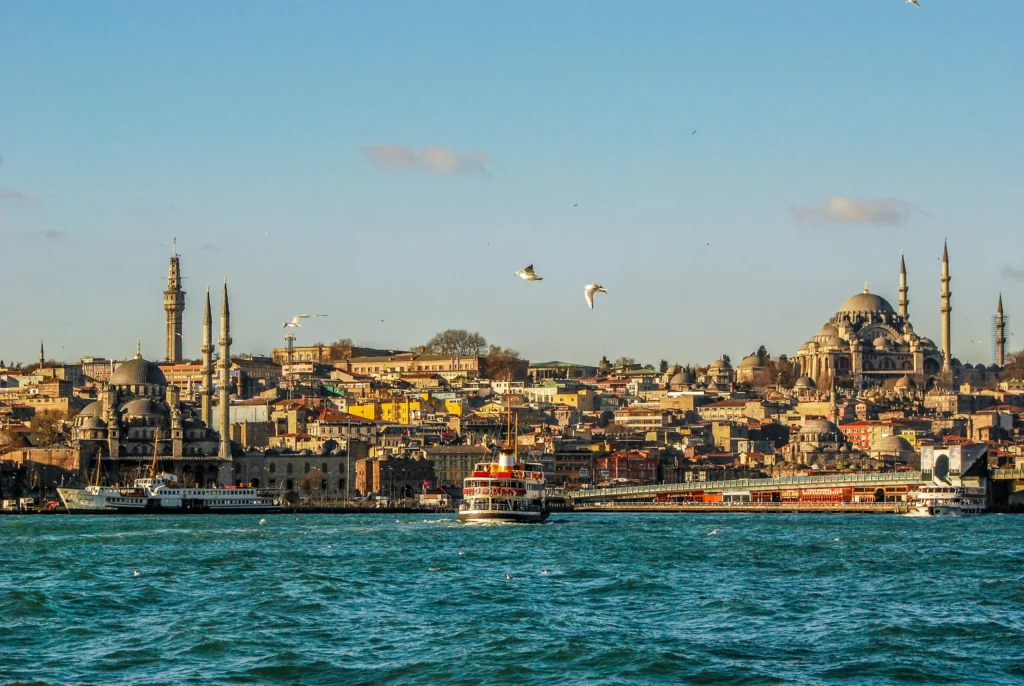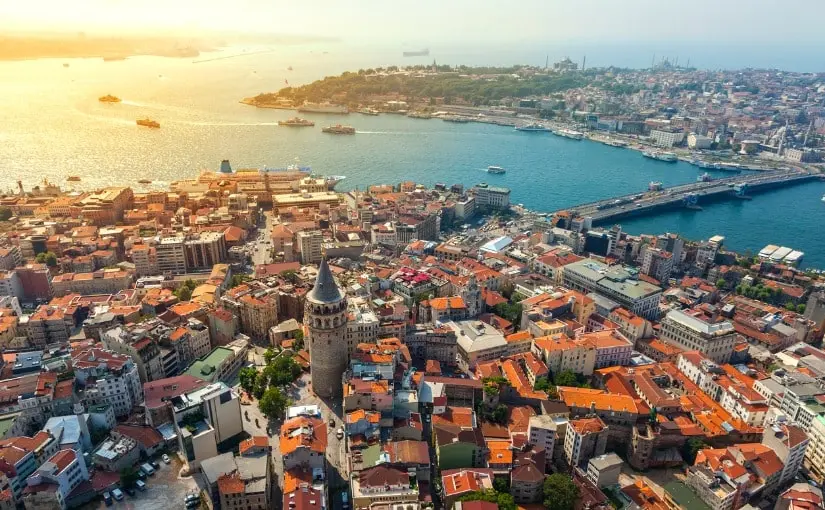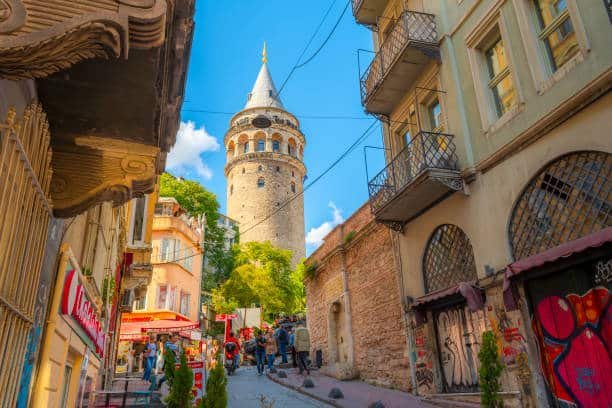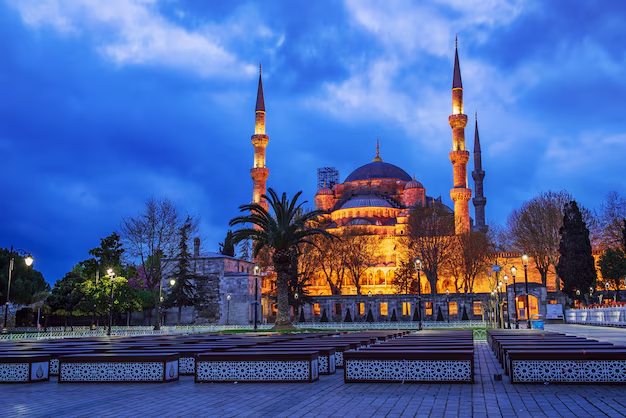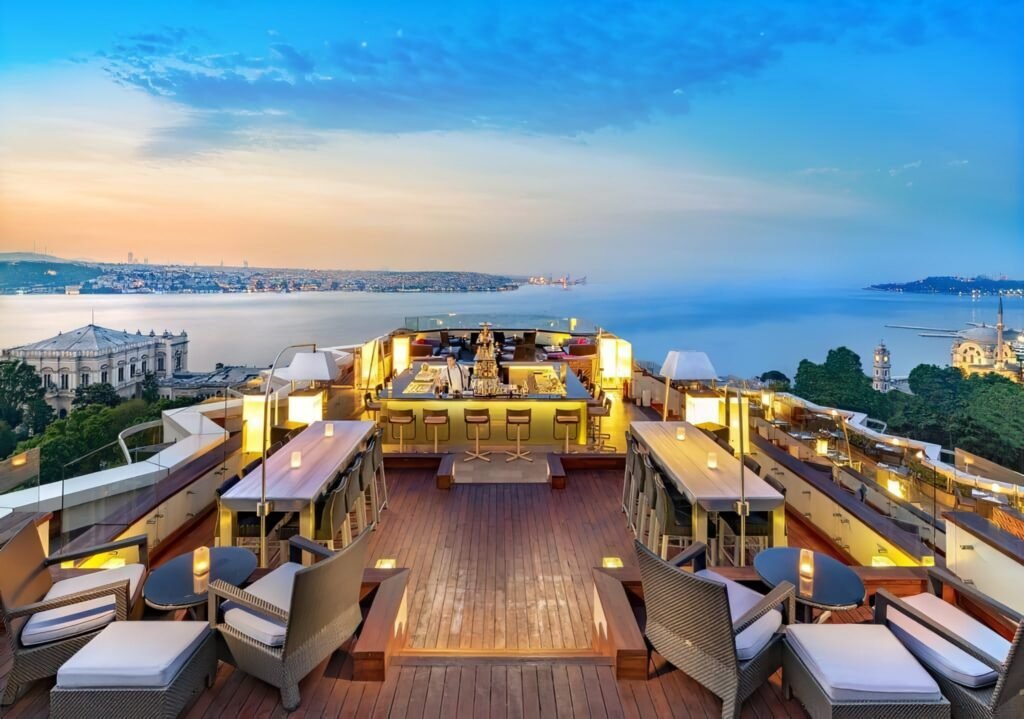Article summary
ToggleIntroduction
Istanbul, the quintessential imperial city, abounds with treasures that bear witness to its glorious past. Among them, the Dolmabahçe Palace stands majestically on the European shore of the Bosphorus, embodying the magnificence and splendor of the late Ottoman Empire. This architectural masterpiece is more than just a museum; it’s a captivating dive into the opulence of a bygone era, a striking contrast to the simplicity of Topkapi Palace, its predecessor.
Built with intentional extravagance, Dolmabahçe served as the administrative center of the Empire and the last residence of the Sultans. Today, visiting Dolmabahçe Palace is an unmissable stop for anyone wishing to understand the Ottoman Empire’s transition towards modernity, while being dazzled by its lavish interior and exterior decor. Prepare for a royal immersion in the heart of Istanbul.
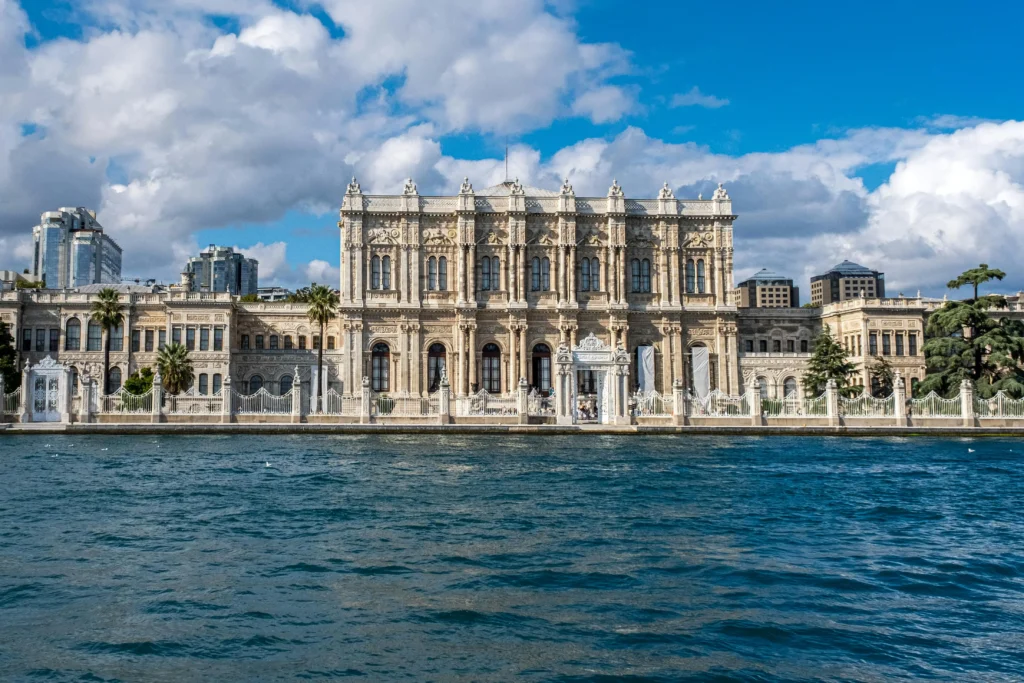
I. Prepare your visit to Dolmabahçe Palace
1.1. How to Get to Dolmabahçe Palace in Istanbul?
Dolmabahçe Palace is located in the Beşiktaş district, easily accessible from key points in Istanbul.
- By Tram (T1): This is the most recommended option if you are coming from historical areas like Sultanahmet or Karaköy. Take the T1 tram to the Kabataş stop, which is the terminus. The palace is just a few minutes’ walk from there, along the Bosphorus.
- By Funicular (F1): If you are coming from Taksim Square, take the F1 funicular to Kabataş, then walk to the palace.
- By Bus: Numerous bus lines also serve the Beşiktaş and Ortaköy areas, dropping you off close to the palace.
- By Taxi / Ride-sharing: A taxi or a ride-sharing service will take you directly to the entrance, which is convenient for maximum comfort, especially if you are traveling in a group or with children.
1.2. How to Get Tickets for Dolmabahçe Palace and What Are the Prices?
Tickets can be purchased on-site or online, and are typically divided by sections.
- On-site ticket office: You can buy your tickets directly at the palace’s ticket office. However, queues can be very long, especially during peak season. It’s advisable to arrive early in the morning.
- Online purchase / Tourist passes: To save time, buying tickets online in advance is an excellent option. Some tourist passes like the Istanbul E-pass include admission and sometimes even a guided tour of the palace, which can be very advantageous and allows you to skip lines.
- Ticket types and indicative prices:
- Combined Ticket (Palace + Harem): This is the most common option, granting access to the main sections. The price is generally around 2000 ₺ (Turkish Lira).
- Separate Sections: It’s possible to buy tickets for the Selamlık (ceremonial section) and the Harem (private quarters) separately, but the combined ticket is often more economical if you wish to see everything.
- Audio Guide: An audio guide is highly recommended and is usually available in several languages. It’s essential for understanding the richness of the place, as individual visits are not always guided by palace staff.
1.3. What Are Dolmabahçe Palace's Opening Hours?
Dolmabahçe Palace is open to the public every day except Monday.
- Opening hours: Generally from 9:00 AM to 6:00 PM.
- Last admission: Entry is usually permitted until 5:00 PM or 5:30 PM, but it’s best to check the exact hours before your visit, as they may vary seasonally or on public holidays.
1.4. What Are the Important Visiting Rules?
To preserve this exceptional heritage, strict rules apply:
- No photography allowed: Photos and videos are strictly prohibited inside the palace.
- Footwear protection: Plastic shoe covers are generally provided and mandatory to protect the delicate floors and carpets.
- Bulky bags: Large backpacks and bags are often not allowed inside and must be left at the cloakroom. Travel light!
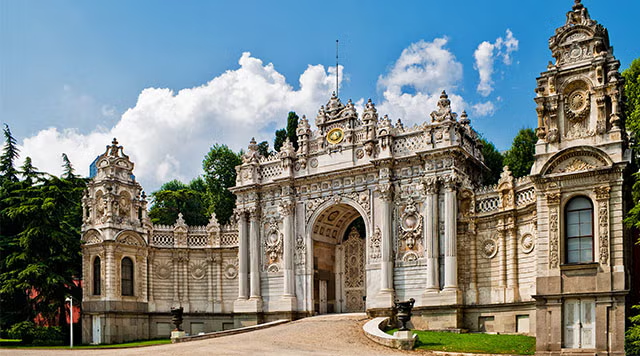
II. Dolmabahçe's Must-See Sections
Dolmabahçe Palace is a gigantic work of art. Each section tells a part of Ottoman history and lifestyle.
2.1. The Selamlık (Ceremonial and Administrative Section)
The Selamlık is the most opulent part of the palace, dedicated to state affairs and ceremonies. This is where the Sultans received dignitaries and guests. You will be dazzled by the richness of the decor:
- The Ceremonial Hall (Muayede Salonu): This is the centerpiece, featuring its colossal 4.5-ton chandelier, a gift from Queen Victoria and the largest in the world, and a soaring 36-meter-high ceiling. It was here that festivities and receptions took place.
- The Crystal Staircase: A majestic staircase with balustrades made of Baccarat crystal.
- The Reception Halls: Each hall boasts its own distinct style, from gold-plated furniture to immense hand-woven carpets.
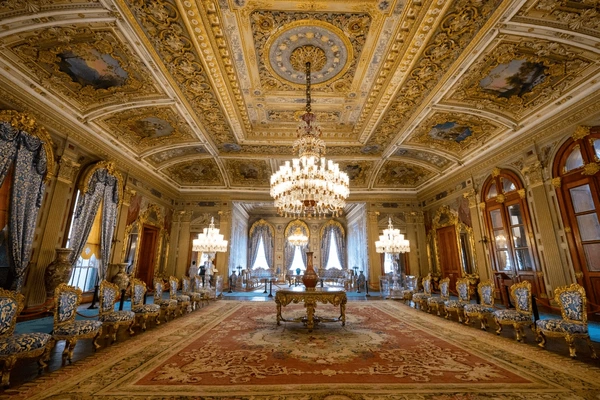
2.2. The Harem (Sultan's and Family's Quarters)
The Harem offers a glimpse into the private life of the Sultan, his concubines, and his family. Less ostentatious than the Selamlık, it is nonetheless exquisitely luxurious. Here, you’ll discover private apartments, Turkish baths, and the living spaces of the women and children. It is also within the Harem that you’ll find the modest room of Mustafa Kemal Atatürk, the founder of the Turkish Republic, where he passed away in 1938. A poignant detail: all the palace clocks are stopped at 9:05 AM, the exact time of his death.
2.3. The Crystal Hall
The Crystal Hall, part of the Selamlık, is often highlighted for its incredible collection of crystal chandeliers. The brilliance of thousands of Baccarat and Bohemian crystals illuminates the vast rooms, creating a stunning visual effect that symbolizes Sultan Abdülmecid I’s desire to rival European monarchies.
2.4. The Palace Gardens and the Clock Tower
The gardens of Dolmabahçe Palace are a splendor in themselves, designed in a European style with immaculate flowerbeds, fountains, statues, and winding paths.
- The Hasbahçe: The main garden offers magnificent views of the Bosphorus and the Selamlık facade.
- The Clock Tower: An elegant Baroque-style clock tower located at the entrance to the gardens, it is a photogenic landmark and an excellent place to start or end your stroll.
III. Tips for an Optimal Experience at Dolmabahçe Palace
3.1. Best Time to Visit: Light and Crowds
- Time of day: Arrive as soon as it opens (9:00 AM) or in the late afternoon (after 3:00 PM) to avoid the largest crowds. The visit typically takes between 2 and 3 hours.
- Days of the week: Prefer weekdays (Tuesday to Friday) over the weekend, which is much busier with both tourists and locals.
- Seasons: Spring (April-May) and early autumn (September-October) offer pleasant weather and blooming gardens, making the visit particularly enjoyable.
3.2. Visit Duration and Tips to Avoid Crowds
Plan for approximately 2 to 3 hours to explore all accessible sections of the palace, including the gardens and museum. A guided tour (often included with tourist passes) or an audio guide is highly recommended to understand the history and architectural details. Patience is key during security checks and at the entrance, especially during peak season.

IV. The History and Architecture of Dolmabahçe Palace
4.1. The Palace's Construction
Built between 1843 and 1856 under the reign of Sultan Abdülmecid I, Dolmabahçe Palace symbolizes the Ottoman Empire’s desire to open up to the West. Tired of the austerity of Topkapi Palace, deemed too medieval, the Sultan desired a modern, luxurious residence, in the European fashion, capable of impressing foreign dignitaries. Its construction cost a fortune, draining the Empire’s coffers and contributing to its indebtedness.
4.2. The Architectural Style
The palace’s architecture is a bold and opulent blend of Western styles such as Baroque, Rococo, and Neoclassical, combined with traditional Ottoman elements. This fusion, typical of the mid-19th century, creates a unique aesthetic, both grand and harmonious. The Armenian Balyan family of architects, who designed many iconic buildings in Istanbul, are behind this masterpiece.
4.3. Importance for the Ottoman Empire and the Turkish Republic
Dolmabahçe Palace was the setting for crucial moments in Ottoman history, from the abdication of sultans to major state receptions. It was the last seat of the Ottoman Caliphate. After the founding of the Turkish Republic, it continued to play a vital role as a presidential residence and was where Mustafa Kemal Atatürk spent his last years and passed away. It is therefore a strong symbol of the transition from Empire to Republic.
Conclusion: Dolmabahçe Palace, a Journey in the Heart of Istanbul
Dolmabahçe Palace is far more than just a tourist attraction; it’s a living page of history, a dazzling testament to an empire’s desire for openness and grandeur in transition. Its architectural splendor, the richness of its interiors, and its central role in Turkey’s destiny make it a place of paramount importance.
Visiting Dolmabahçe Palace in Istanbul is an experience that dazzles and educates, offering a unique immersion into the luxury and intrigue of Ottoman power, as well as the final days of Atatürk. Do not miss this masterpiece that embodies the spectacular transition from one era to another, and which will remain etched in your travel memories.
OUR TOURS
Discover Istanbul with our exclusive tours: experience magical moments as a couple with our romantic tour, explore local authenticity with our traditional tour, share memorable family adventures, or have fun with friends in this vibrant city.

Romantic Tour
Explore romantic Istanbul: Bosphorus sunsets, candlelit dinners, and historic walks.
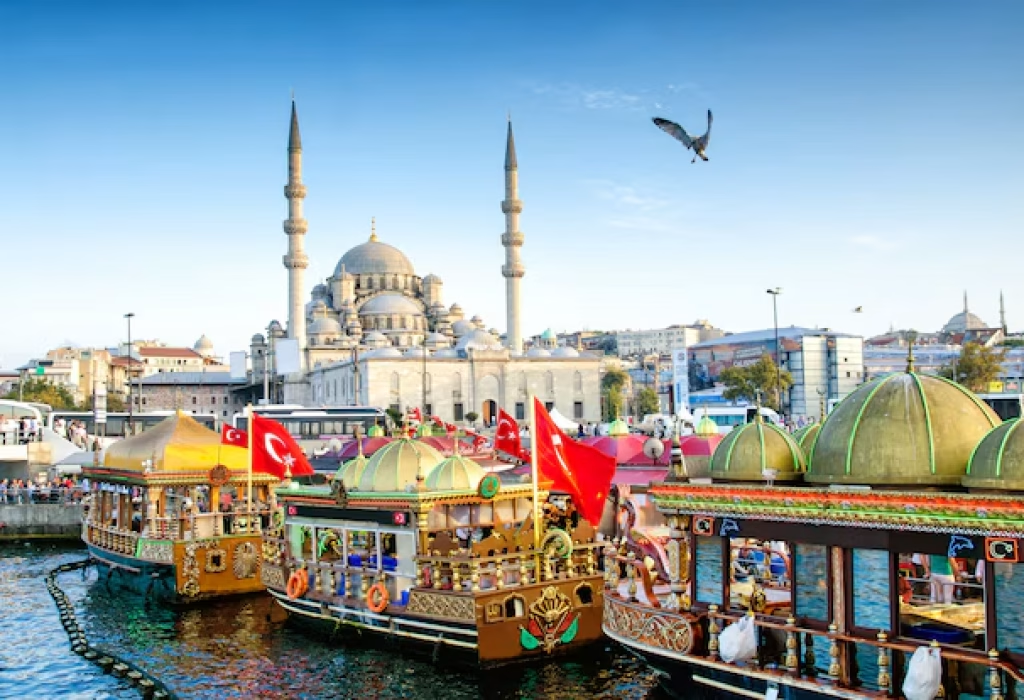
Traditional Tour
Discover authentic Istanbul: historic sites, local markets, and ancestral traditions for a cultural immersion.
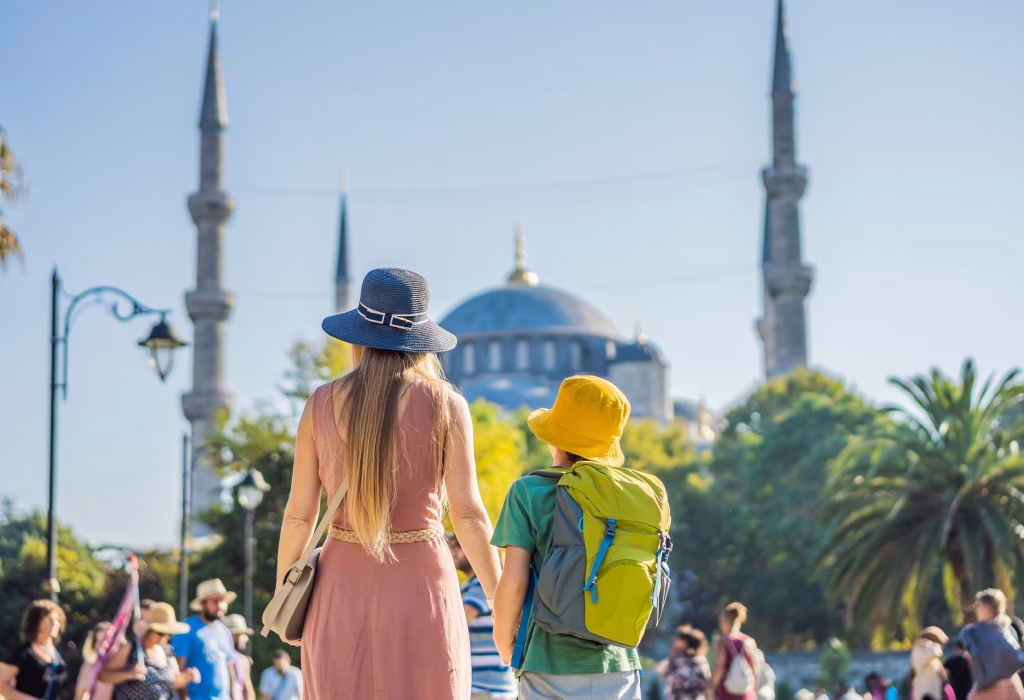
Family Tour
Experience Istanbul as a family: fun activities, iconic landmarks, and shared moments for all ages.

Tour with Friends
Explore Istanbul with friends: trendy neighborhoods, gourmet breaks, and lively evenings for unforgettable memories.

